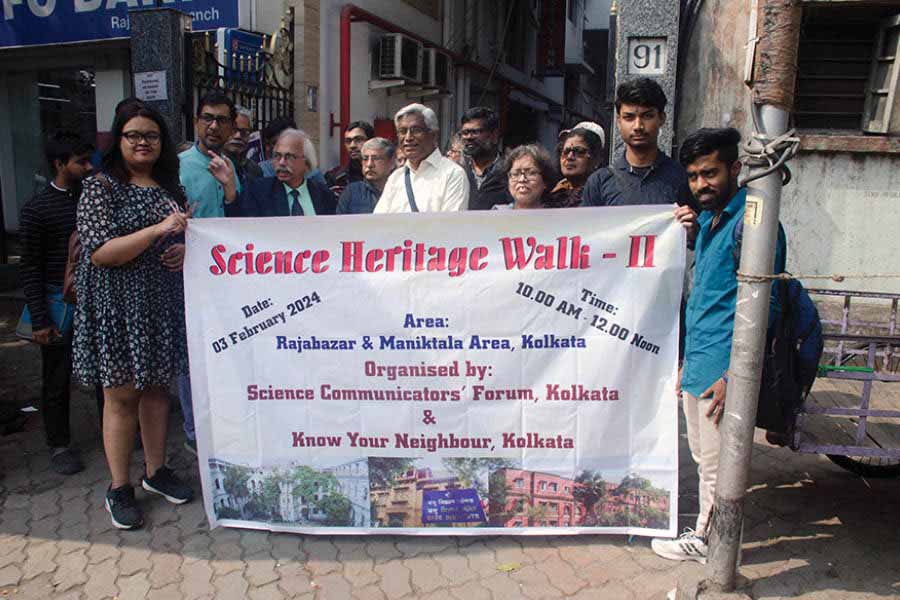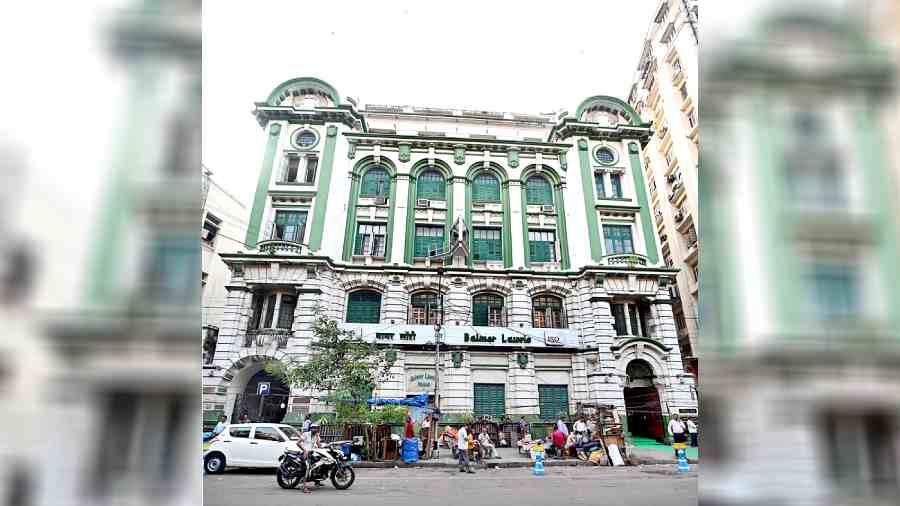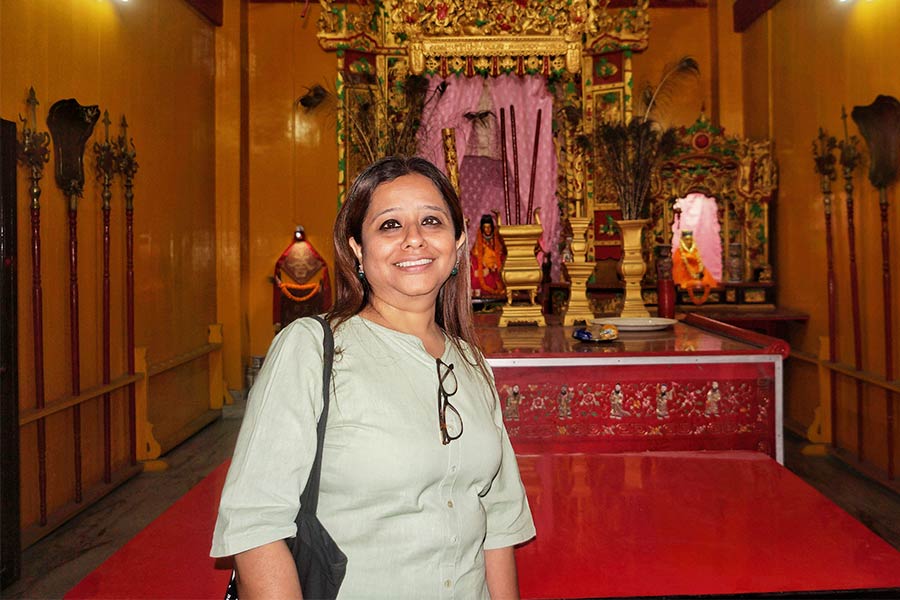A series of walks conceptualised by Know Your Neighbour (KYN), a social initiative aimed at promoting communal harmony in Bengal, promises to acquaint participants with the city’s heritage spots that throw light on the role played by the city in the evolution and development of science.
The third of the three walks will be held on February 28, which is observed as National Science Day to mark the discovery of Raman Effect by C.V. Raman in 1928 that led to a Nobel Prize two years later. The first in the series covered the College Street area and included the University of Calcutta and Presidency University on January 14.
My Kolkata had joined the second walk of the series held on February 3 that covered Rajabazar Science College, Basu Bigyan Mandir and a few more places in the Rajabazar- Maniktala area. The walk focused on the role played by the city in the evolution and development of science.
Concept
In recent years, the city has been witness to many heritage walks. Most concentrate on a certain neighbourhood and the walk focuses on the history and heritage of the particular locality. But things are in for a change and in very recent times, there have been theme-based walks. These walks focus on particular historical events such as World War II, the Indian freedom struggle and even scientific discoveries.
The organisers and mentors
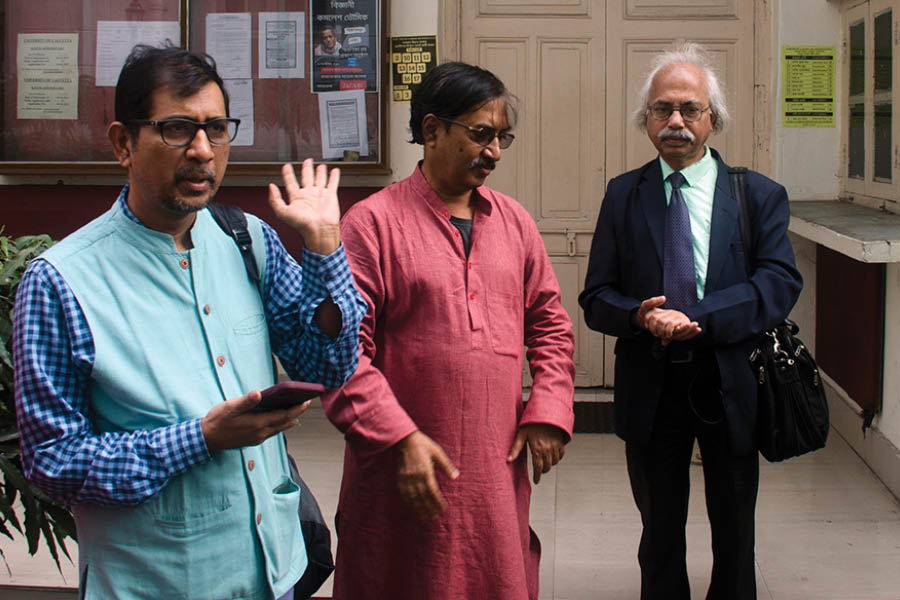
(From left) The organisers Sabir Ahmed of Know Your Neighbour and Abhijit Bardhan of Science Communicators’ Forum, along with one of the mentors Shankar Nath
The series of three Science Heritage Walk has been the brainchild of Know Your Neighbour (KYN), a social initiative aimed at promoting communal harmony in Bengal. Sabir Ahmed of KYN says: “We have done several heritage walks in the lesser known areas of Kolkata such as Metiabruz and Khidirpur but our latest focus is science and we are trying to showcase the role of the city in the history and evolution of science and technology.”
He added: “Since science is not restricted to a locality, we are planning a series of walks covering different localities. The first set comprises three walks and if the response is good, we have further plans.”
The walk was executed by Science Communicators’ Forum (SCF). Founded in 1985, this voluntary organisation focuses on creating scientific awareness. Abhijit Bardhan of (SCF) says: “We are regular organisers of science camps, known as Joyful Science Camp. Those focus on nature activities like bird watching and tree identification. They also include map reading and skywatching sessions.” He adds: “These science heritage walks are our new initiative and we are trying to bring in resource persons who will act as walk leaders and mentors.”
The Rajabazar Science College section of the walk was mentored by Shankar Nath, an oncologist, while the Basu Bigyan Mandir part was led by Gautam Basu, a retired bio-physicist of Basu Bigyan Mandir.
The Walk
The walk mainly focused on three sites, namely:
1. Rajabazar Science College
2. Basu Bigyan Mandir
3. Residence of Girindrasekhar Bose, considered as the father of Indian psychiatry
Rajabazar Science College
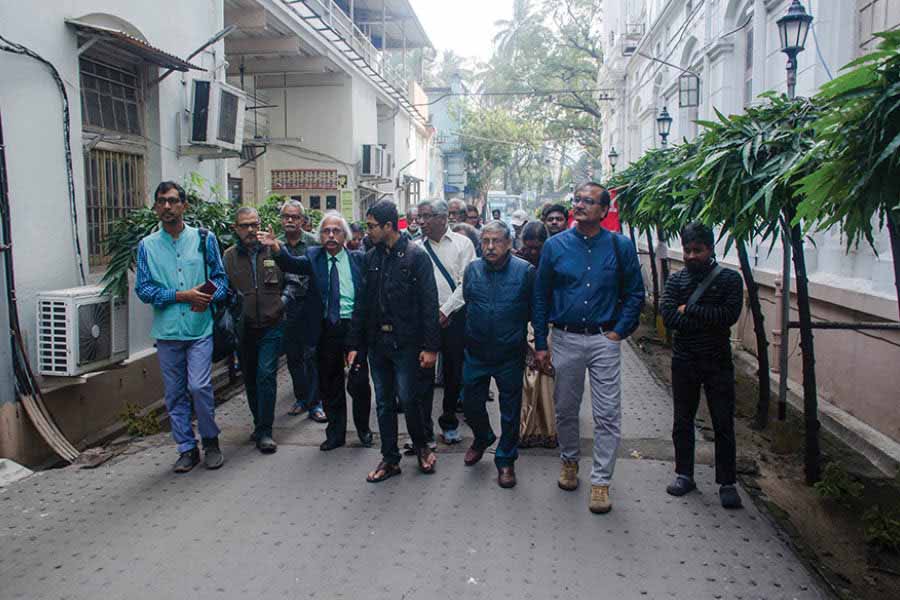
Participants of the Science Walk inside the Rajabazar Science College campus
The walk started around 10.30am with a brief introduction by the members of KYN and SCF. Nath took charge and narrated history of the science college with his amazing story-telling skills. Rajabazar Science College, officially known as Rashbehari Shiksha Prangan, was named after Rashbehari Ghosh, an eminent lawyer and philanthropist (Rashbehari Avenue is also named after him) who donated a large sum of money for the science college.
The plot of land came from Taraknath Palit, also a lawyer and philanthropist who also donated a sum of Rs 10 lakh. The plot originally housed a bagan bari (garden house) of Kali Krishna Tagore. Palit bought the property and donated it for the science college. The college was inaugurated in 1914 and was the brainchild of Asutosh Mookerjea, the then vice-chancellor of Calcutta University. The first match of students consisted of science stalwarts like Satyendra Nath Bose, Meghnad Saha, Prasanta Chandra Mahalanobis and several others. The science college was also the home of Asia’s first cyclotron and Asia’s first electron microscope was built in a lab at the science college. Built in the 1940s, the laboratory served as the founding stone for the Saha Institute of Nuclear Physics (SINP).
Basu Bigyan Mandir
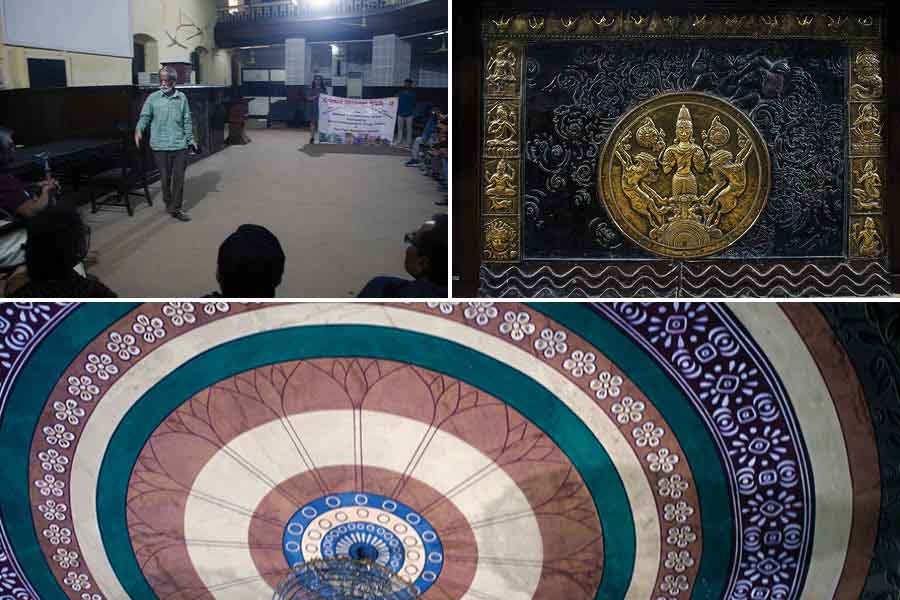
(Clockwise from top left) Mentor Gautam Bose briefs the participants inside the auditorium of Basu Bigyan Mandir; intricate metal work on the podium of the auditorium at the historical landmark and colourful fresco on the ceiling of the auditorium
Next stop was Basu Bigyan Mandir or Bose Institute. Gautam Basu led us to the semi-circular auditorium of the institute. He briefed the participants about the architecture of the hall, which included an elaborate fresco on the ceiling and an intricate metal work on the podium. He spoke on the personal life of Jagadis Bose and his wife Abala Bose. Next the team ventured behind the main building to an open space consisting of a huge manicured lawn. At one corner of the lawn stands a small temple-like structure, built over the buried ashes of Jagadish Bose. Next stop was the small museum housing Jagadish Bose’s scientific equipment, personal possessions and awards and memorabilia.
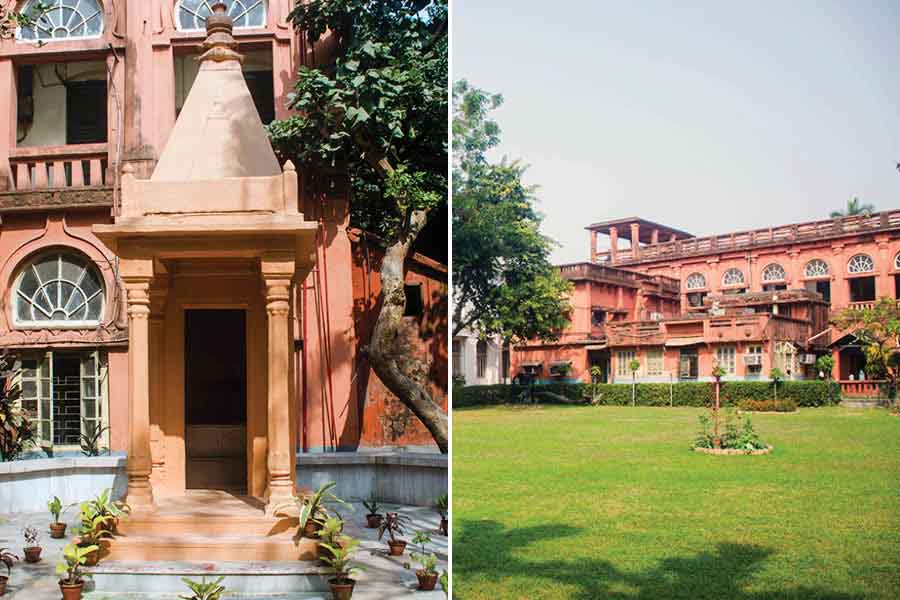
Memorial of Jagadis Chandra Bose and (right) the complex at Basu Vigyan Mandir
Residence of Girindrasekhar Basu
After visiting the two illustrious institutions, the participants were taken to Parsi Bagan Lane off Acharya Prafulla Chandra (APC) Road. According to historical records, Cowasjee Banaji, an eminent Parsi businessman once had a bagan bari (garden house) in this part of the city. The bagan bari has long gone but the name remains and so do several palatial buildings. One of these once served as the residence of Girindra Sekhar Basu, who is considered as the father of Indian psychiatry. A doctor and psychoanalyst, he had regular correspondence with Sigmund Freud. In 1933, he started the psychiatric outpatient department (OPD) at RG Kar Medical College. Today, his residence houses a psychiatric clinic.
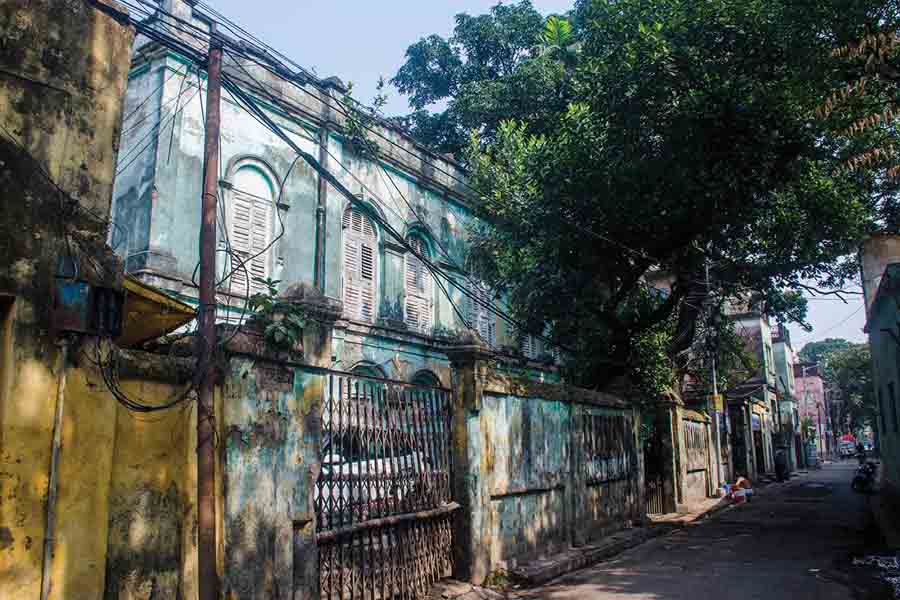
Residence of Girindra Sekhar Basu, considered as the father of Indian psychiatry
Beyond Science
Although a science walk, the discussion went beyond science. They included the history of Maratha Ditch, which was dug to protect the city from Maratha invasion. Today’s APC Road is part of the filled-up Maratha Ditch. The walk continued past the Vidyasagar’s House and finally ended at Rammohun Library, with a dash of north Kolkata’s famous kochuri.
Participantspeak
The walk had over a dozen participants among them was Satyabrata Guha, former deputy director-general at the Geological Survey of India. He said: “I missed out on the first walk and did not want to give this one a miss. These walks are excellent windows providing a detailed insight into the world of science, technology and beyond. These walks are an excellent opportunity for the young generation. Sadly, the walk hardly had any young audience.” He hoped to see more young legs at the next walk scheduled on February 28, focusing on the Jadavpur University area.

